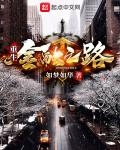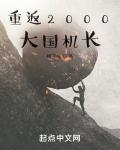Chapter 487 New Brand
Although Legacy means heritage or bequest in English, it was later introduced to China and translated as: Legacy.
But that’s a story for later. At this time, Baichuan Feng hadn’t thought of this yet.
"Now that the new car series has been decided, what are the differences between the versions sold in Japan and overseas?"
New car series sold in different countries usually have some subtle differences, which is normal.
Nakamura Takao and his team had thought about this for a long time. "We plan to sell the standard version of Legacy in Japan, and in addition to the standard version, we will also add a travel version in North America."
Due to different regions and cultures, people in Japan and North America have obvious differences in their car preferences.
The biggest difference is, for example, displacement. In the past, the streets of Japan were full of light cars under 600cc, but in North America, no one would probably look at cars under 1600cc.
Neon has a small territory, large cities with a large population, and a lack of resources, so light vehicles are more popular.
But the situation in North America is just the opposite. The vast territory and the American soldiers who are always ready to grab oil have created a market for large-displacement vehicles.
However, because Subaru produces high-end luxury models, the displacement of Legacy is basically above 1800cc in order to ensure power when it was first designed.
This translates to 1.8L, a power that is not bad in Japan, let alone North America.
It coincided with the booming domestic automobile market in Japan during the bubble period, and people rarely considered fuel consumption when buying a car at that time.
Before 1986, light vehicles accounted for 37.5% of Japan's automobile market demand, but now this share has dropped to less than 10%.
On the contrary, the market share of luxury models with a displacement of around 2000cc began to increase significantly.
This is also the reason why Takao Nakamura and his colleagues dared to design the Legacy series of models. Ultimately, it is because there is a market and demand.
After hearing Takao Nakamura say that two versions would be released, one for domestic and one for international travel, Shirakawa Kaede felt that this was unnecessary.
“We can also try to sell a travel version in Japan later, with a displacement of at least 2,000cc, and 3,000cc would be best.
Don’t underestimate the market demand outside of Tokyo, as Tokyo has the fewest vehicles per capita in Japan.”
As soon as Baichuan Feng finished speaking, everyone started laughing. This was not a joke, but the truth.
Last year, according to the statistical report "Japan Automobile Inspection Registration Information" released by the Ministry of Transport, data on household car ownership in 1,741 districts, cities, towns and villages across Japan was displayed.
The bottom 10 are all members of Tokyo's 23 wards. Isn't it incredible that the most developed area has the least car ownership?
But if you think about it carefully, it’s not too strange. After all, Tokyo’s public transportation is very developed.
Due to the crowded population and the uneconomical cost of fuel, parking fees and various taxes, people are more accustomed to taking trams and subways.
It is because of the bubble in the past two years that more and more people are driving.
But even so, Tokyo still has the lowest number of cars per capita, and the most are in remote areas.
For example, the coastal Fukushima, and the mountainous and hilly areas of Gunma and Akita are all in the top ten of the statistics.
The reason why these places have a high number of car ownership is also related to public transportation. Due to the limitations of the terrain, main lines such as railway networks are very scarce.
People in Tohoku and Kyushu can only rely on cars to travel. Therefore, the number of cars per capita in remote areas is far more than that in Tokyo.
This is the reason why Shirakawa Kaede wants to release the travel version in Neon, and he is targeting the areas around Neon.
In the past, people might have hesitated to buy a luxury car like the Legacy, but at least in the next few years it will not become a threshold.
After a little consideration, Takao Nakamura and his colleagues agreed with this idea. They decided to test the waters with the regular version first. If the market feedback was good, they would add a travel version.
However, this is only a short-term plan and an emergency measure to improve Subaru's financial problems.
To address the root cause, simply selling new cars is not enough.
"Then Nakamura-san, the Legacy series is now in your hands. In addition to these, does Subaru have any other development plans?"
“We are planning to add another SVX model to the ALCYONE platform.
It is an upgraded version of the former, and is still aimed at the wealthy class in Japan.”
If the Legacy series is a mid-size luxury car that focuses on handling and space, then the Alcyone SVX is a sci-fi super coupe.
The two target different customer groups, with the former focusing more on practicality and performance.
Young people may prefer the latter. Just looking at the concept picture, Shirakawa Kaede thinks its appearance is very bold.
"Alcyone SVX will proceed as planned, but in addition to launching new models, Subaru will also have to change its marketing strategy."
Baichuan Feng's simple words made everyone in the conference room perk up.
They knew that this Shirakawa-san was going to perform a major surgery on Subaru.
"The former Fuji Heavy Industries, now Subaru, placed too much emphasis on words like horizontally opposed and full-time four-wheel drive."
Seeing that Nakamura Takao and the others' faces suddenly became serious, Shirakawa Feng quickly smiled and waved his hands.
"Of course this is not a criticism, it is a good thing that Subaru has its own unique technology.
The achievements you have made have become Subaru's business card to the world today."
After Baichuan Feng said this, everyone's expressions eased a little, but they knew that was not the point.
“However, from the perspective of the entire enterprise, the market is the first thing to consider.
Only with enough markets and enough sales can Subaru continue to grow healthily."
After all, it’s still profitable.
Although Takao Nakamura and others understood it, as science and engineering men, this was still somewhat incompatible with their philosophy.
"So in order to permanently solve Subaru's similar problems in the future, we may need to lower our posture in business operations."
In the past, Fuji Heavy Industries paid too much attention to so-called safety, four-wheel drive, and horizontal opposition, and gradually went further and further on this niche road.
It is true that there is a craftsman spirit in making cars, but this does not fit with Baichuan Feng's identity as a capitalist. He only wants to maximize profits.
The niche Subaru may become the faith of some fans, but such a high-end Subaru is destined not to become a big hit.
That's why Baichuan Feng said that he would lower his posture and start taking a people-friendly approach.
"The Subaru brand is undoubtedly deeply rooted in people's hearts, and the previous series of models have established its popularity and the image it has among people.
Therefore, I decided that Subaru should be a brand in the passenger car market.”
"Brand classification?" Nakamura Takao and others asked subconsciously.
"That's right, brand classification." Baichuan Feng nodded to confirm everyone's idea.
“The Subaru brand is retained, and it still focuses on the mid-to-high-end market and only makes mid-to-high-end models.
You can now fully unleash your expertise in horizontally opposed and full-time four-wheel drive on Subaru models.
Of course, we need a more people-friendly brand, which does not have all the advantages that Subaru has.
Two-wheel drive, fuel efficiency, and cost-effectiveness are the first design factors we need to consider.
We can perhaps call this people-friendly brand SIKADE (Shirakawa Motors).”
SIKADE, these letters are the Romanization abbreviation of Shirakawa Kaede's name.
Originally he wanted to use romanization instead, but although it was still accustomed to reading in Japanese, it was a bit awkward in English.
Therefore, in order to increase fluency and facilitate future dissemination, it was simply changed to an abbreviation.
“SIKADE will operate as a separate brand, and we will also register a related joint-stock company.
However, considering the current situation, SIKADE will first be affiliated with Subaru, and will be segmented after it officially launches its own models in the future. "
To put it simply, a new brand will be established first, taking a people-friendly approach, while Subaru will still be positioned in the high-end market.
As for SIKADE's (Shirakawa Motors) two-wheel drive technology that will be sold in large quantities in the future, Shirakawa Kaede is not very worried.
Because Subaru did not use the four-wheel drive system on its first few models.
It also gradually transitioned from two-wheel drive, so Subaru still retains the accumulation of two-wheel drive technology.
But after all, it has been a few years since the generation, and now picking up the two-wheel drive technology...
"Mr. Shirakawa, Fuji Heavy Industries has tried to make a two-wheel drive car that is affordable to the people before, but the results were not very satisfactory."
Nakamura Takao said it in a more tactful way, but his meaning was very clear.
Subaru takes its current route not because it wants to, but because of the market's choice.
For those more economical two-wheel drive cars, why don't people choose more well-known car manufacturers such as Toyota, Nissan, and Honda, but choose Shirakawa Motors which has no foundation at all.
Shirakawa Kaede certainly understood this principle, but the place where he planned to promote the SIKADE brand was not Japan.
"Mr. Nakamura, SIKADE will not be listed in Japan in the next three years, or Japan is not its main market."
"Huh?" Everyone was confused. Didn't they agree to focus on the Japanese market?
"For cost-effective models like SIKADE, I want to make China its first stop."
"China?" Everyone exclaimed subconsciously. In the current era, it is not an ideal market for cars.
“I know everyone thinks that Huaxia is not the main force in the current automobile consumer market, but what we are investing in is the future.
As a brand new brand, it is quite difficult to gain recognition both in Japan and overseas.
In this case, why don’t we go to a completely new market, where the automobile-related market is almost blank and it is just right for SIKADE to take root.
If we set up a joint venture automobile factory there, SIKADE will be the first Japanese automobile company to enter China."
Yes, that's right, Baichuan Feng has always dared to be the first in the world.
Although Toyota and Nissan entered China in the 1970s, they were mostly dealer-style cooperation, with occasional support for one or two technologies.
As for the real joint venture OEMs, currently no Japanese car company has invested there.
Apart from Volkswagen and Jeep, it seems that no other brands have OEMs in China at this time.
But if Shirakawa Motors goes, it will be the third joint venture and the first Japanese one.
Scarcity makes things valuable. Although the market in China is limited now, at least Shirakawa Automobile will not have to worry about its popularity.
At worst, you can just put up a Subaru sign to attract some attention.
Moreover, Shirakawa Kaede did the opposite and directly developed the SIKADE brand in China first, and then considered giving back to Japan or overseas in the future.
"Subaru's previous two-wheel drive models, including the Subaru 1000, FF-1, R-2, and even the current LEONE series, can all be improved.
Then it was transformed into the two-wheel drive series of Shirakawa Motors and introduced into Huaxia. Their design concept is just like what I just said, cheap, fuel-efficient, and cost-effective as the first factor. "
Subaru has two-wheel drive technology, and what it needs to do now is to iterate the technology and localize the design in China.






